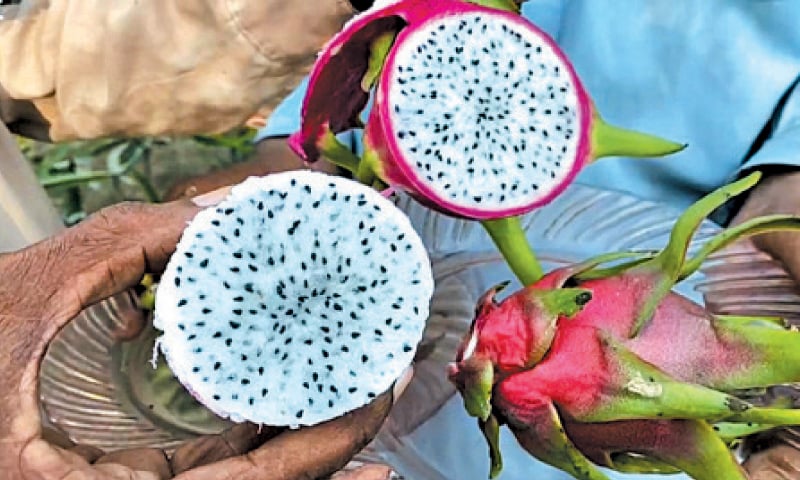RAHIM YAR KHAN: Many farmers in the district have switched to uncommon fruits due to a host of factors, mainly climate change issues.
Saghar Hussain, a farmer of Chak 182-P in Sadiqabad tehsil’s Manthar area, is now cultivating dragon fruit at his agriculture farms. Mr Hussain was motivated by an agriculture expert who visited the area in 2019 for his research.
According to Mr Hussain, Pakistan Agriculture Research Council Karachi Director General Dr Attaullah Kunri provided him 50 seed branches of the fruit and he established a nursery for further cultivation. He said initially, he cultivated the fruit over two kanal in February 2020 and harvested 55 pieces in September 2022. The yield of the fruit was 145 kilograms and he gifted the fruit to friends and relatives.
He said now he had produced 30,000 plants of the fruit in his nursery and would cultivate it over 10 acre. He said he used tunnel farming which cost him Rs300,000. He said 1,800 plants would be sowed over an acre and each plant would produce 50 to 100 fruits of half kg each.

He said he had started receiving orders from four-star hotels and supermarkets in large cities and hoped that he would sell the fruit at Rs3,000 a kg.
The dragon fruit, he said, had pink, red, white and purple colours and tastes like grape, pear, strawberry and melon.
Khwaja Fareed University of Engineering and Information Technology’s Life Sciences’ Head of Department Prof Dr Ammara Riaz told Dawn that the botanical name of the fruit was Hylocereus polyrhizus. The fruit had been recognised as the most beautiful of the Cactaceae family and it could grow in dry areas and was commonly grown in Southeast Asia.
“Its cultivation has greatly gained popularity worldwide due to attractive colours, sweetness, juicy and pleasant taste. It is also associated with high antioxidant capacity of bioactive compounds such as polyphenols, flavonoids and betacyanins that have important functions for human health,” she said. The leaves and flowers of this plant were used by the ancient Mayas (Mesoamericans) for medicinal use as a diuretic and healing agent, she said.
“It is a quite economical product for the conventional producer because its cultivation requires little or no investment. Subsequently, it can be considered an alternative crop with high commercial potential,” Prof Ammara added.
Published in Dawn, October 19th, 2022













































